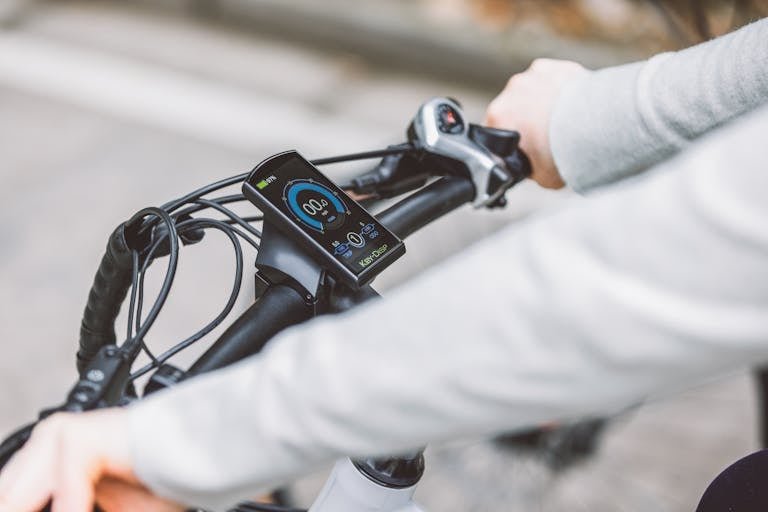E-Bike Surf Racks Explained: Features and Benefits
Surfing and electric bikes represent two of the most exciting outdoor lifestyle trends, and the combination of e-bike surf racks has revolutionized how surfers transport their boards. This comprehensive guide will explore everything you need to know about surf racks designed specifically for electric bikes.
E-Bike Surf Racks Explained: Features and Benefits
Types of E-Bike Surf Racks
1. Rear Cargo Rack-Mounted Racks
- Design: Attaches directly to the rear cargo rack
- Capacity: 1-2 surfboards
- Best For: Commuter and urban e-bikes with sturdy rear racks
- Pros:
- Low cost
- Easy installation
- Minimal bike modification
- Cons:
- Limited board length support
- Reduced bike stability
- Less protection for board
2. Side-Mounted Racks
- Design: Attaches to e-bike frame or cargo rack sides
- Capacity: 1-2 surfboards
- Best For: Mountain and hybrid e-bikes
- Pros:
- Better weight distribution
- Improved bike handling
- More secure board attachment
- Cons:
- More expensive
- Requires specific mounting points
- Can interfere with pedaling
3. Trailer-Style Surf Racks
- Design: Detachable trailer that connects to e-bike rear
- Capacity: 2-3 surfboards
- Best For: Long-distance surfers, multiple board transportation
- Pros:
- Maximum board protection
- High carrying capacity
- Independent suspension
- Cons:
- Highest cost
- Increased overall vehicle length
- Reduced e-bike battery range
4. Front-Mounted Racks
- Design: Attaches to front of e-bike frame
- Capacity: 1 surfboard
- Best For: Compact e-bikes, urban commuters
- Pros:
- Lightweight
- Easy board access
- Minimal bike modification
- Cons:
- Limited board size
- Potential wind resistance
- Less stable at high speeds
Key Features to Consider
Board Protection
- Padded contact points
- Soft-grip materials
- Shock absorption systems
- Weather-resistant coatings
Mounting Mechanisms
- Quick-release systems
- Tool-free installation
- Adjustable width and length
- Anti-theft locking mechanisms
Weight Considerations
- Lightweight materials (aluminum, carbon fiber)
- Weight distribution balance
- Maximum weight capacity
- Impact on e-bike performance
Benefits for Surfers
Convenience
- Effortless board transportation
- Eliminates need for car racks
- Easy urban and beach navigation
- Reduced physical strain
Cost Savings
- No vehicle fuel costs
- Minimal maintenance expenses
- Environmentally friendly transportation
- Reduced parking fees
Performance Advantages
- Extended surf exploration range
- Access to remote surf spots
- Reduced physical fatigue before surfing
- Sustainable transportation option
Installation and Maintenance Tips
Pre-Installation Checklist
- Verify rack compatibility with e-bike model
- Check weight distribution capabilities
- Ensure secure mounting points
- Test rack stability before first use
Maintenance Guidelines
- Regular rack inspection
- Lubricate moving parts
- Check mounting hardware
- Clean after saltwater exposure
- Store in dry environment when not in use
Safety Considerations
- Proper board securing techniques
- Weight limit awareness
- Regular rack condition checks
- Balanced load distribution
Recommended Accessories
- Waterproof board bags
- Additional securing straps
- Protective board covers
- Anti-theft locks
Estimated Costs
Budget Ranges
- Basic Rear Rack Mounts: $50-$150
- Side-Mounted Racks: $150-$300
- Trailer-Style Racks: $300-$600
- Premium Custom Racks: $600-$1000
Conclusion
Selecting the right e-bike surf rack transforms your surfing experience, combining convenience, sustainability, and adventure. By understanding different rack types, features, and maintenance requirements, you can make an informed decision that enhances your surfing lifestyle.
Always prioritize safety, compatibility, and proper installation when choosing your e-bike surf rack. The perfect rack not only transports your board but becomes an essential part of your surfing journey.







